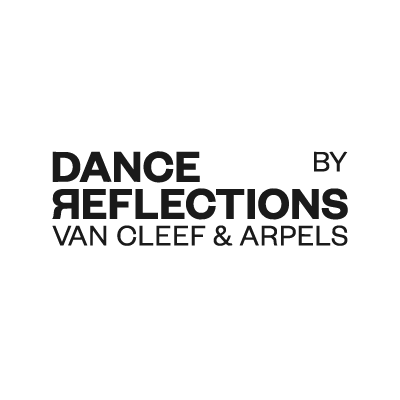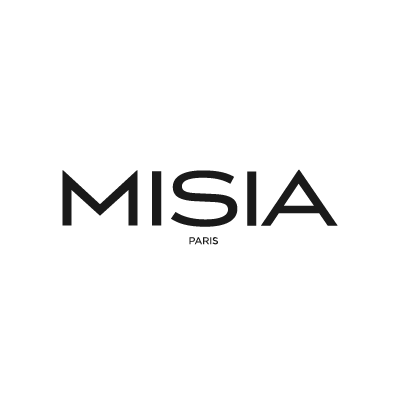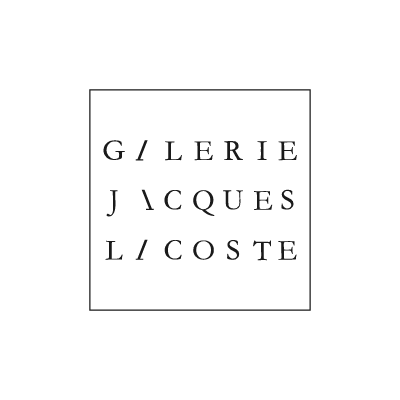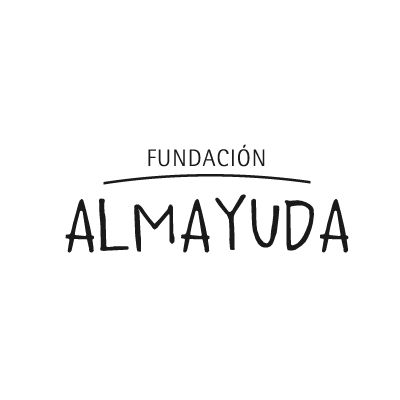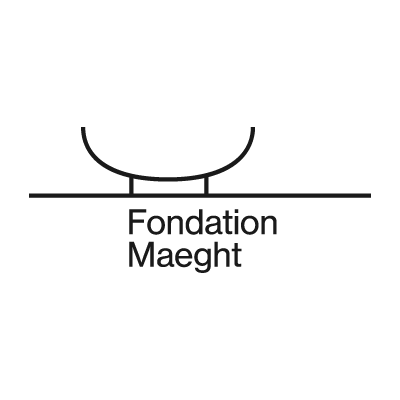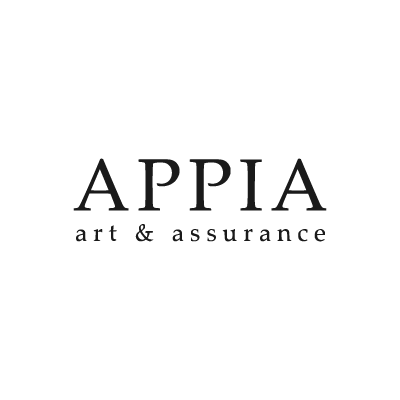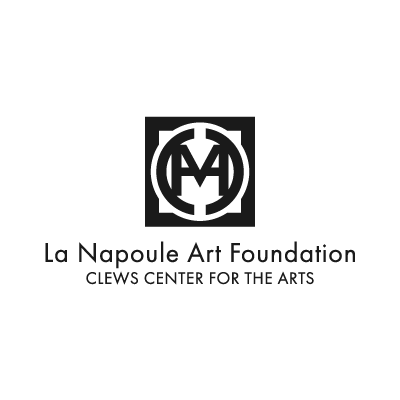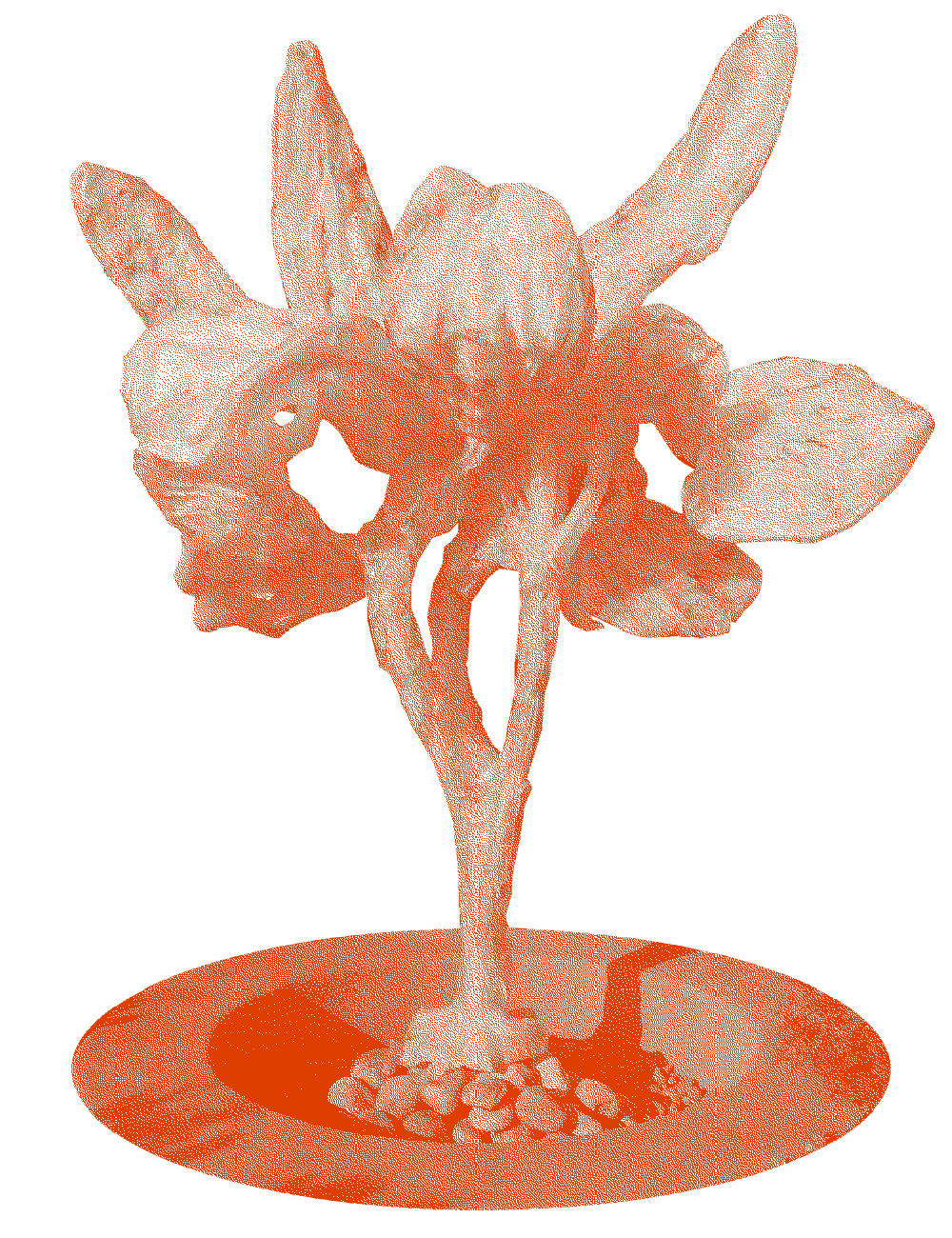
Genius Loci opens the doors of Maison Bernard, a masterpiece of organic architecture from the 1970s designed by Antti Lovag in Théoule-sur-Mer, near Cannes on the French Riviera.
"Conceived by Antti Lovag in the late 1960s, at the height of student protest and challenges to conservatism in all its forms, Maison Bernard expresses a utopic vision of the domestic environment in which the human body can live in perfect harmony with its surroundings. Breaking free from architectural convention, the house embodies a wholly original concept of modernity: a total experience of connection with the elements.
Genius Loci Maison Bernard offers an engaging itinerary in and through this organic architecture, vitalizing for both mind and body, intensifying the visitors’ perception of the world. The works and installations on view, nearly half of them created especially for the event, were produced by more than twenty modern and contemporary artists, emerging or established, whose practice, ideas and viewpoints, each in their own way, capture and celebrate the spirit of the place.
Space and nature, as sources of inspiration but also of a reexamination of our relationships with ourselves, others and the environment, underpin the works of the visual artist Isa Melsheimer, the designer Marcin Rusak, the ceramist Safia Hijos, the designer Charlotte Chesnais and the artist-designer duo Studio GGSV, as well as the outdoor installation created by Samuel Nguyen with students
from the Villa Arson in the course of an on-site workshop.
The cosmogony of Maison Bernard is revealed through the mobile sculpture by Pol Bury, the mirrored installation of works by Katinka Bock and Toni Grand, the marble and crystal sculptures of David Logan, Susanna Fritscher and Antoine Poncet, the creations of Sabrina Le Bachelier and Marion Mailaender, the works nestled in the garden by Venia Dimitrakopoulou and Rachel Robinson, as well as the audio and visual installations of Emma Dusong, Jérôme Echenoz and Yves Gellie. This cosmic energy also provides the impetus for Xavier Veilhan’s new installation Rays, created specifically for Maison Bernard in a dialogue with the space and its infinite variations.
This living opus, transformed into an arena of artistic experimentation, incites us more than
ever to reflect on new ways of experiencing our personal space, of perceiving our immediate environment, and ultimately of inhabiting our planet."
Marion Vignal, curator of the exhibition
Photographs : © Courtesy Yves Gellie
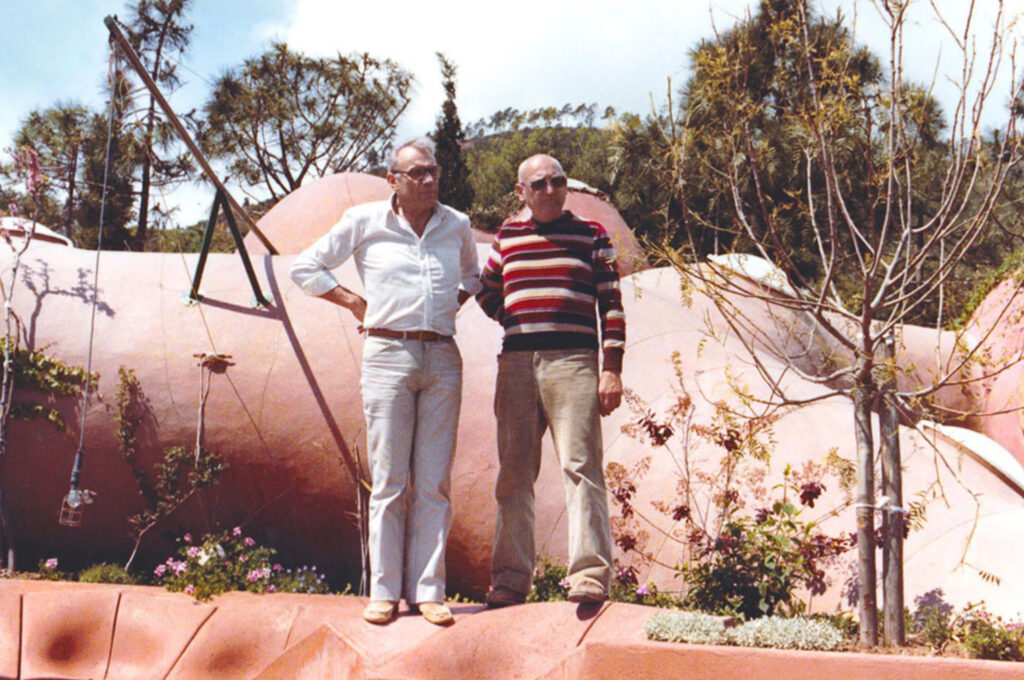
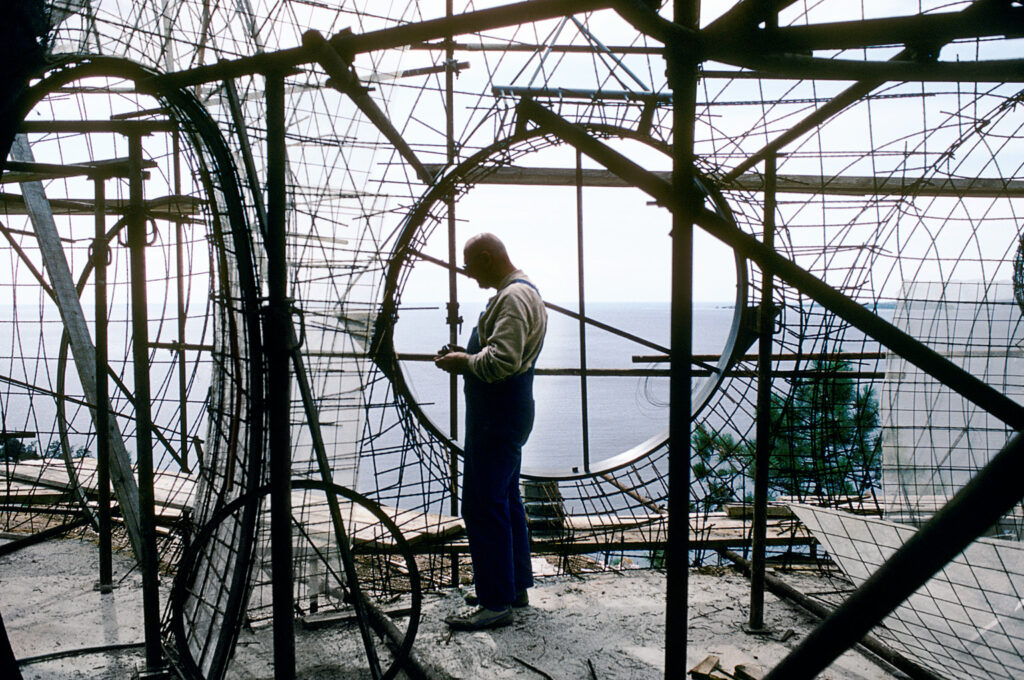
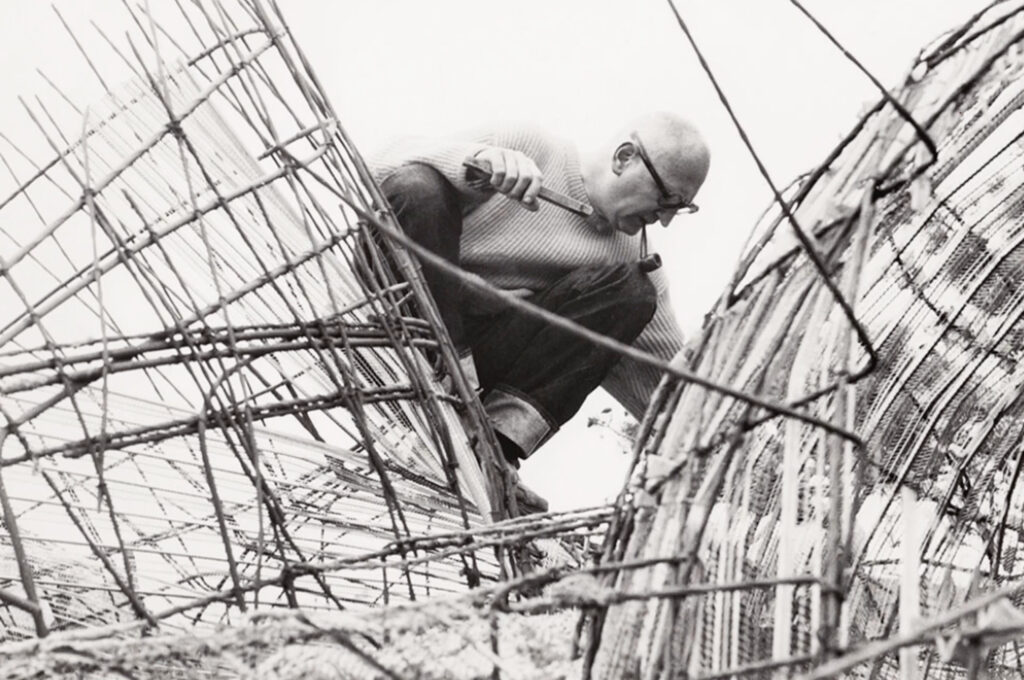



Built in the 1970s, Maison Bernard is the fruition of an encounter between two free-thinking personalities brimming with innovative ideas, Antti Lovag and Pierre Bernard, and a landscape: the Estérel massif, with its vivid red rock formations overlooking the Mediterranean.
With its proliferation of ovoid cells, Maison Bernard seems to have sprung from the unbridled, whimsical imagination of a child. The structure, an emblem of the 1970s avantgarde, could be merely the hallucination of an architect-sculptor defying the principles of reality, but it is in fact quite the opposite. What Antti Lovag has given us is a masterpiece of harmony and functionality. For ten years, he fine-tuned and “experienced” the living spaces, calculating the perspectives and orientations, perfecting the travertine floors like marquetry tableaux, designing and integrating the furniture, crafting his creation with the finesse of an artisan, the precision of an engineer and the freedom of an artist.
This extraordinary house would never have seen the light of day if Lovag had not met Pierre Bernard, an adventurous industrialist who, impressed with the architect’s innovative ideas, commissioned him to build a holiday home in Théoule-sur-Mer. Having collaborated with the architect Jacques Couëlle on the construction of the Cité Marine of Port-la-Galère in the 1960s, Lovag knew the region well. This Mediterranean enclave is where Maison Bernard took shape after nearly ten years of construction using artisanal techniques. The result is an experimental structure devoid of right angles, ensconced in the landscape as an homage to the curve on every scale. In Lovag’s view, no form was better suited to human morphology than the sphere. He abhorred conventional, inflexible layouts and sought above all to emphasize functionality in the spaces that he conceived.
Joined by a deep bond of friendship, Bernard and the architect—or “habitologist”, as he defined himself—pursued their structural adventures, building a few kilometers away the future Palais Bulles the name given to the property by Pierre Cardin, who acquired it shortly after Bernard’s untimely death in 1991. Restored by Bernard’s children Isabelle and Jean-Patrice in the early 2010s, with the help of the architect Odile Decq, Maison Bernard remains one of the finest examples of Lovag’s architecture and his conception of well-being. During its renovation, Isabelle Bernard redesigned the garden, creating a landscape of cacti and succulents whose form and beauty echo the genius of this organic structure.


The biography of Antti Lovag is characterized by frequent travels and shrouded in mystery. Born in Hungary in 1920, he grew up in Finland and Sweden, where he studied naval architecture. In 1939, at age 19, he enlisted in the Finnish army. In 1946 he moved to Paris, where he studied architecture, urban planning and cinema. He then left for the Alps, where he worked with various architects on the construction of holiday villages and individual chalets. In the early 1960s he moved to the Riviera and began collaborating with Jacques Couëlle. The two worked together on houses in Castellaras-le-Neuf, in the hills above Cannes, and began building the Port-la-Galère residential compound in Théoule-sur-Mer. On the fringes of the architecture of their time, they were pioneers of an innovative movement that emphasized environmental considerations, seeking to integrate the dwelling into its natural setting.
They upheld an evolutive, intuitive approach to architecture, adapted to the needs of the occupants. In 1969 Lovag began his first residential project in Tourrettes-sur-Loup, in southeastern France. Alternatively called Maison du Rouréou or Maison Gaudet, the structure was not fully completed until 30 years later. In parallel, Lovag started the construction of Maison Bernard, and pursued his reflections on the dwelling and well-being by building Palais Bulle, also in cooperation with his friend Pierre Bernard. Between 1974 and 1979 he built the CERGA geodynamic and astronomical research center on the Calern Plateau in Provence, followed in the late 1980s by Villa Roux in Fontaines-sur-Saône, near Lyon. In 2001 the architect moved into a three-quarter scale model that he had built for Maison du Rouréou in the heart of the forest in Tourrettes-sur-Loup. He lived there until his death in 2014.

Créé et interprété par Némo Flouret et Guilhem Chatir, Tessa Hall, Philomène Jander, Jean Lemersre, Jean-Baptiste Portier, Solène Wachter. Production : Margaux Roy
© César Vayssié
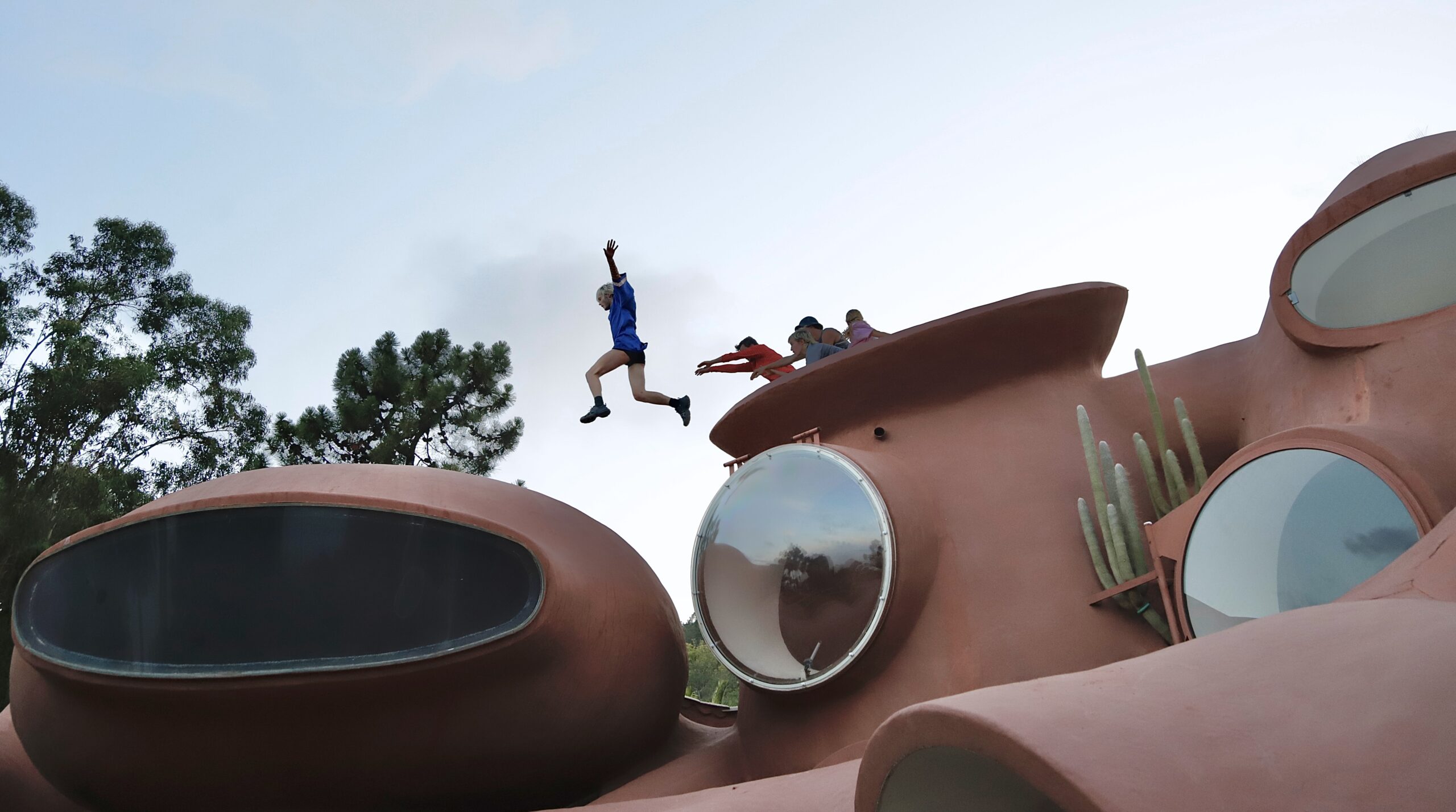
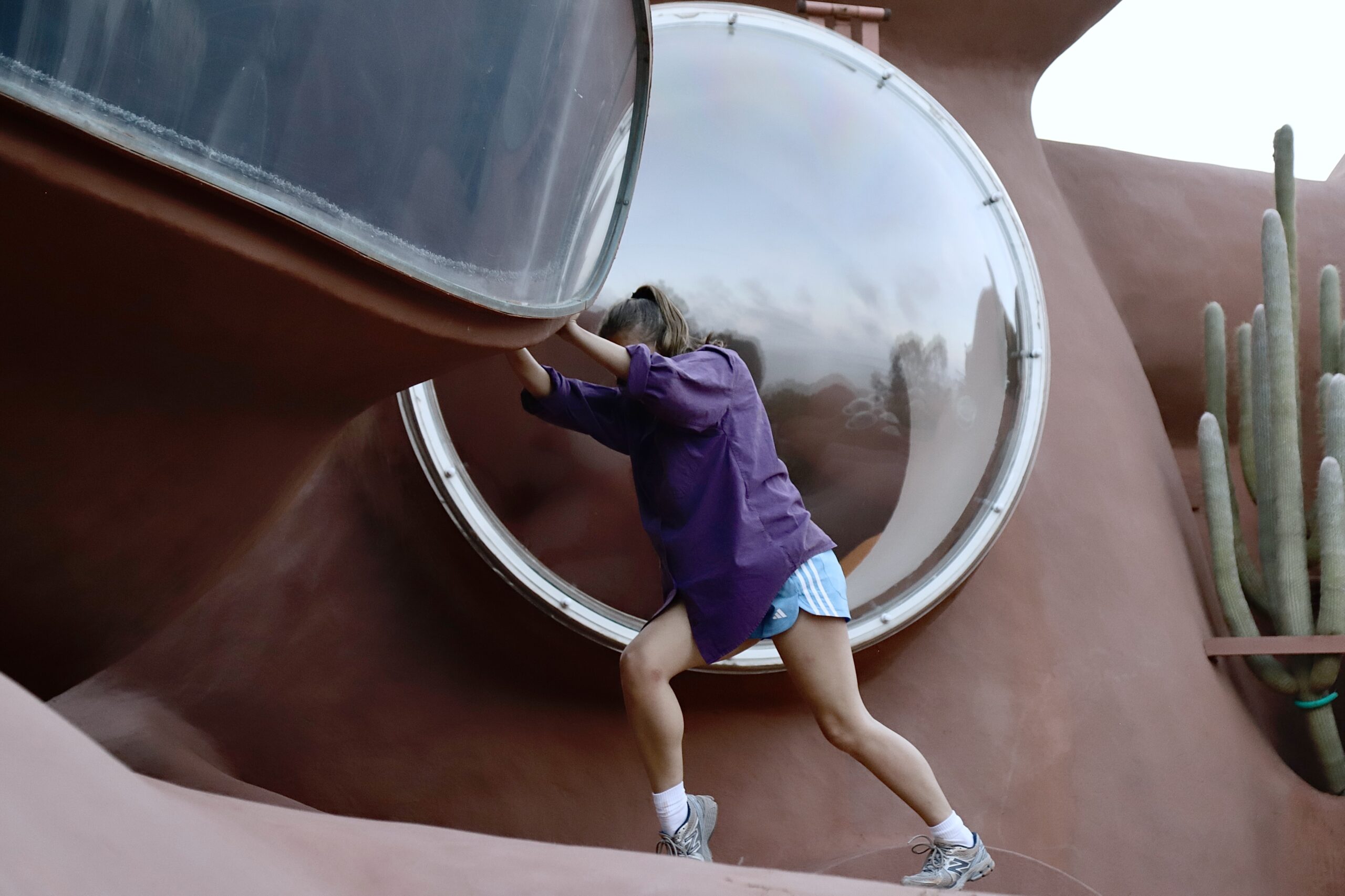

Créé et interprété par Némo Flouret et Guilhem Chatir, Tessa Hall, Philomène Jander, Jean Lemersre, Jean-Baptiste Portier, Solène Wachter. Production : Margaux Roy
© César Vayssié


Invited by Marion Vignal to devise a unique interaction between dance and Antti Lovag’s architecture, the dancer and choreographer Némo Flouret conceives a promenade performance entitled DANCE PARC: a Playground Project, with the backing of Dance Reflections by Van Cleef & Arpels. With this creation, the artist pursues his research in choreographic forms that break free from the conventional framework of the performance venue. The choice of including contemporary dance emerged as a way of developing a dialogue between architectural forms inspired by the human body and the dancers’ bodies in movement. The performance will take the viewers on a circuit in which the dancers will act by turns as guides, interpreters and players of the space (see practical information).
In Flouret’s choreographic trajectory, the idea of “extremity” has always been a key starting point for generating gestures, movements and spatial scenarios. DANCE PARC: a Playground Project is a hide-and-seek in dance, an interplay of perspectives that incites viewers to perceive the sensual shapes of Maison Bernard through the lens of bodies that embrace, move across or contrast with the details of the architecture, transforming it into a playground.
Némo Flouret has been developing a site-specific approach to choreography for several years. His creations occupy spaces that were not intended to accommodate dancers in movement, ranging from post-industrial sites with the piece 900 Something Days Spent in the XXth Century to the Louvre museum with Forêt, in collaboration with the dancer and choreographer Anne Teresa De Keersmaeker.

Le Workshop de la Villa Arson, sous la direction de Samuel Nguyen, avec la collaboration d'Hélène Blondel, Sarah Cotelle, Silvio
© Adrien Dirand
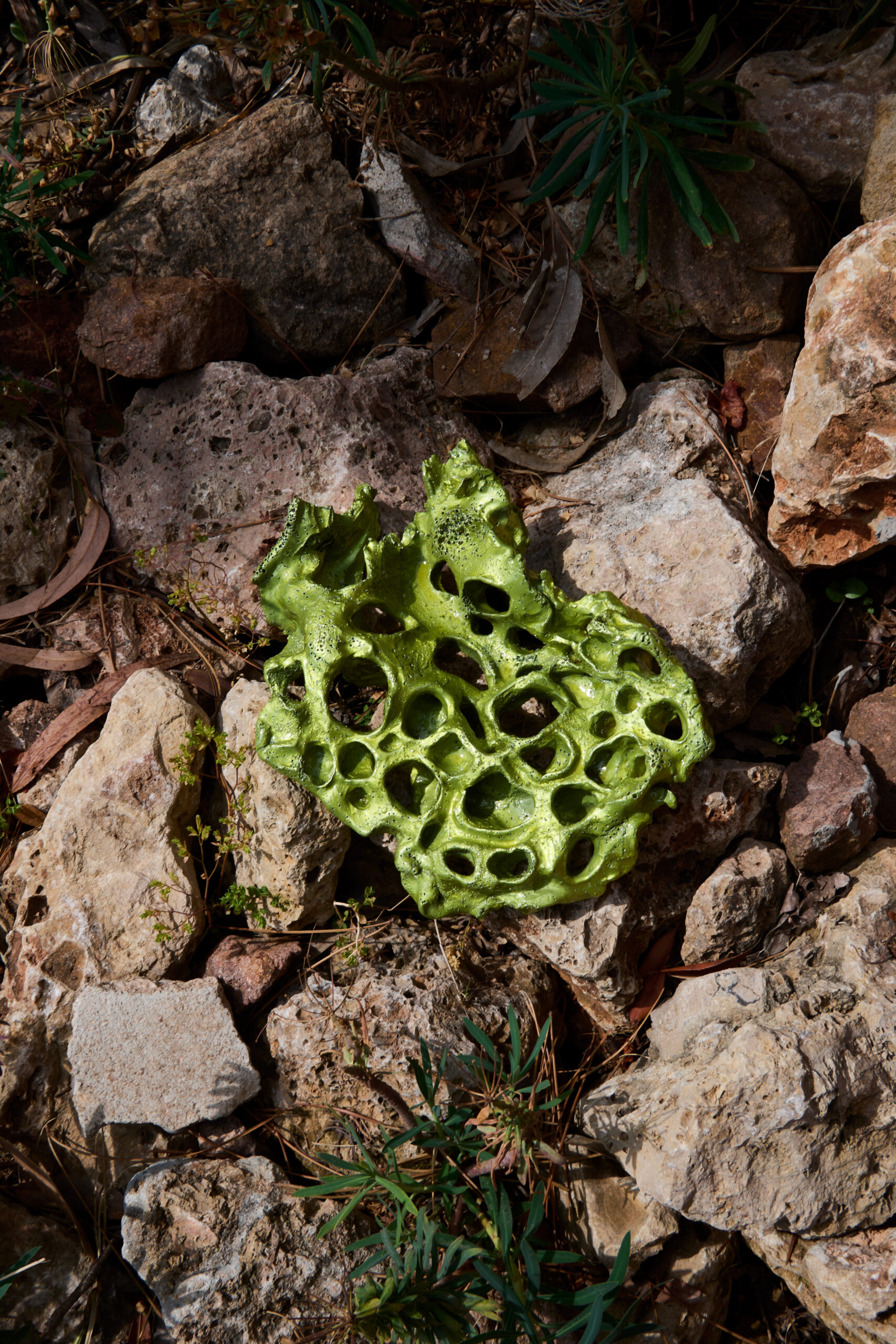
Sous la direction de Samuel Nguyen, avec les étudiants de la Villa Arson
© Adrien Dirand
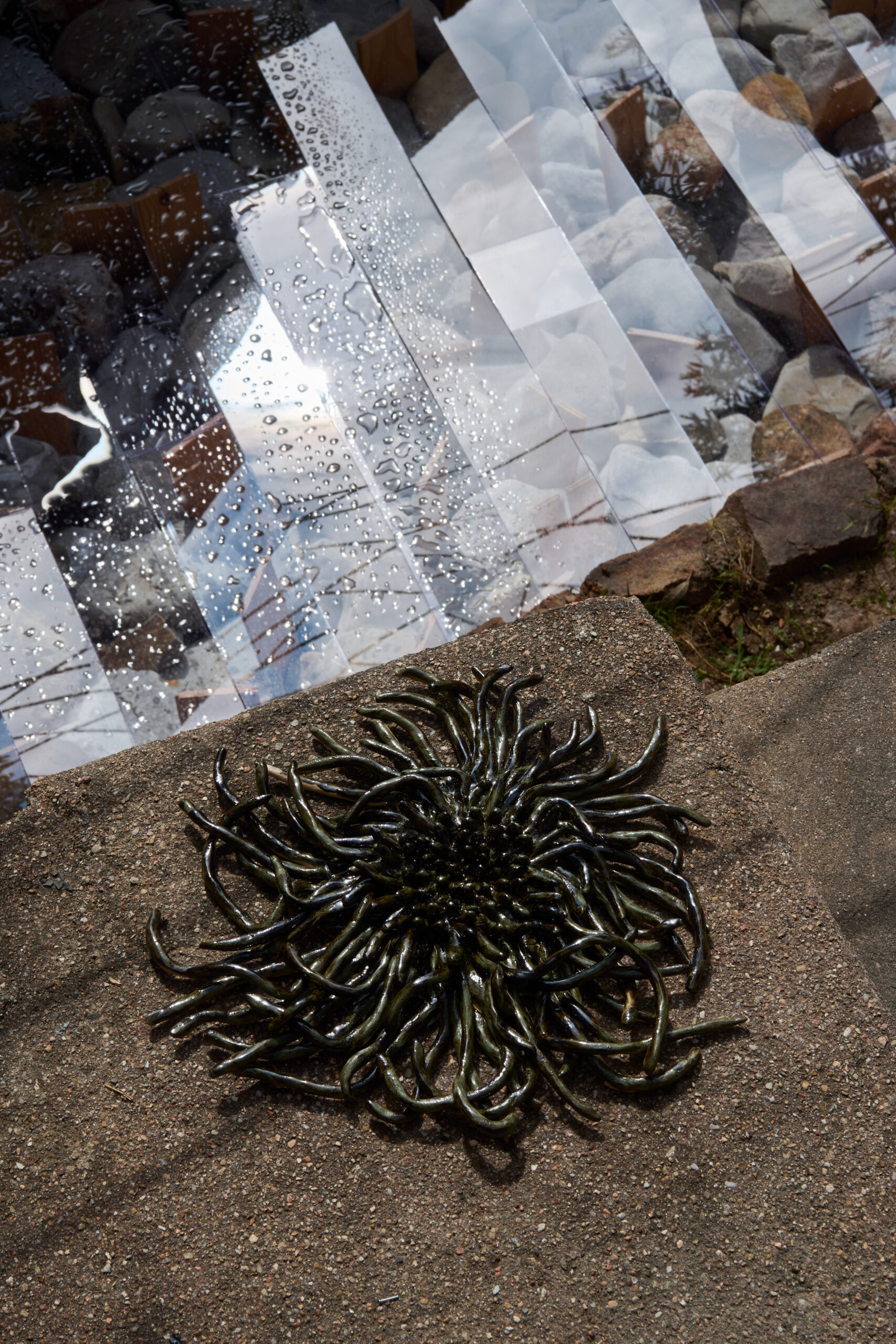
Oh Jieun
© Adrien Dirand

Le Workshop de la Villa Arson, sous la direction de Samuel Nguyen, avec la collaboration d'Hélène Blondel, Sarah Cotelle, Silvio
© Adrien Dirand

Sous la direction de Samuel Nguyen, avec les étudiants de la Villa Arson
© Adrien Dirand

Oh Jieun
© Adrien Dirand
Ctrl + skênê heterôsis directed by Samuel Nguyen, with students from the Villa Arson
To celebrate nature and in keeping with Antti Lovag’s ideal of becoming one with the environment, Genius Loci has joined forces with the Villa Arson art school (Nice) to host an exceptional workshop in the gardens of Maison Bernard, under the direction of Samuel Nguyen.
The artist, a 2022 Villa Arson graduate, develops a collective, participatory practice based on a quest for “social ecology.” For an exhibition in June 2023 at Ricardo Bofill’s Les Espaces d’Abraxas, a public housing complex in Noisy-Le-Grand, Genius Loci offered Nguyen carte blanche to produce works in dialogue with the residents.
At Maison Bernard he has co-created, with students from the Villa Arson, a temporary installation entitled Ctrl + skênê heterôsis. Conceived in resonance with the spirit of the place, it transforms an uncultivated section of the house’s grounds into an experimental zone that echoes Lovag’s process.
Inspired by the “habitologist’s” reflections on the concept of symbiotic space, the project occupies the interstices between nature and human intervention, offering an immersive sensory experience in which boundaries fade away, allowing new narratives to emerge. Ctrl + skênê heterôsis comprises multiple environments inspired by the principles of Solarpunk (a movement that Antti Lovag, according to this artistic collective, foreshadowed), seeking to strike a balance between nature and technology. Produced on site, this visual and audio creation is in fact a series of installations crafted from textiles, cement, ceramic, Plexiglas, wood and solar panels. Together, they form an ecosystem situated between artifice and nature in constant evolution, upholding a sustainable approach from conception to execution.
The Maison Bernard Endowment Fund was created by Isabelle and Jean-Patrice Bernard with the mission of preserving the architectural work of Antti Lovag built with Pierre Bernard in Théoule-sur-Mer in the 1970s. The Maison Bernard Endowment Fund also seeks to promote public access to Lovag’s work. Each year it hosts an artist in residence for the creation of an original works in harmony with the house’s architecture and environment. The resulting artworks remain on permanent display on the premises.
Profoundly attached to the world of dance since its origins, the High Jewelry Maison strengthens its commitment with Dance Reflections by Van Cleef & Arpels. Guided by the values of creation, transmission and education, this initiative aims to support artists and institutions in presenting choreographic heritage, while also promoting new productions. Since its launch in 2020, it has promoted numerous dance companies for their creations as well as the presentation of multiple performances around the world.The program is complemented each year by major events, including the Dance Reflections by Van Cleef & Arpels Festival, whose first edition took place in London in March 2022. This support further extends to awareness-raising actions focused on dance culture for the broadest possible audience, professionals and amateurs alike.
MISIA is a French editor and creator of prestigious, exclusive, and high-quality fabrics. MISIA draws its inspiration from the joyful, creative, daring, glamorous and refined world of the early 20th century, reinterpreting it in a resolutely modern way. Born out of a journey, an artistical or cultural adventure, each collection delivers a new emotional and sensorial experience to the most influential people in the world of interior design.
Since 1997, Galerie Jacques Lacoste has been dedicated to rediscovering and promoting the decorative arts of the 20th century, specializing in French creations from the 1930s through the 1950s. A member of the Compagnie Nationale des Experts, Lacoste is aninternationally respected expert. Taking great care to ensure authenticity and combat counterfeiting, he makes a point of only presenting pieces whose provenance is impeccable, most often acquired directly from the original clients’ descendants. He has been a patron of the Musée des Arts Décoratifs in Paris since 2018 and is now recognized as a key player among the world’s leading antique dealers.
A figure of reference in the perpetuation of Jean Royère’s legacy, Jacques Lacoste also spotlights the work of the master glassmaker Max Ingrandas well as the sculptors Alberto and Diego Giacometti. Having acquired from the family of Antoine Poncet (1928-2022) the contents of the sculptor’s studio, Galerie Jacques Lacoste is broadening the scope of its approach to 20th-century art.
Founded in 2010, the Fondation Almayuda provides backing for projects in the realms of culture, solidarityand environmental protection, promoting access to education and training for socially disadvantaged groups. It supports contemporary creative activity and encourages interactions between artists, enabling new projects to come to fruition. From its headquarters in Geneva, Switzerland, the foundation funds projects throughout the world in collaboration with local partners.
Inaugurated in 1972, Villa Arson was conceived from the outset as a highly innovative institution, with several essential and complementary functions in support of creation: teaching, research, experimentation, production, and exhibition. Villa Arson’s uniqueness also lies in the association of its different areas of activity (a school, a library, an art center, a research center, and an art residency), whose actions intersect and enrich experiences. Villa Arson is home to some 230 students. The school offers a single Arts department covering a broad spectrum of disciplines and practices. An exhibition program with a strong international outlook and a focus on emerging creation aims to highlight the crossroads between art, research, experimentation, and transmission.
Inaugurated in 1964, the Fondation Maeghtis the first foundation for modern and contemporary art in France. It perfectly combines art with architecture and nature. In addition to its sculpture gardens and temporary exhibitions, the Foundation houses a collection of works by artists such as Miró, Calder, Chagall, Giacometti, Richier, Bonnard, Braque, Kelly amongst many others.
The fine art insurance brokerage firm AppiaArt & Assurance was born of a collaboration between Edouard Bernard and Hadrien Brissaud. Since 2015, the founding partners’ mission has been to offer insurance solutions tailored to the needs of their professional and private clients: galleries, auction houses, art dealers, restorers, private collectors, museums and institutions, fine art shipping services, etc.Cultivating a passion for art, wine and classic automobiles, Appia Art & Assurance offers its policy holders made-to-measure services and dedicated management. The confidentiality, responsiveness and efficiency of its team members are the key to its close relations with its clientele.
Foundedin 1951 by the American patron of the arts Marie Clews to honor the memory of her husband, the sculptor Henry Clews, La Napoule Art Foundation promotes contemporary creativity and cultural interaction through a program of artist residencies. Château de La Napoule, the couple’s former seaside retreat on the French Riviera, is now an international center for the arts. Among its many former residents are several winners of the Prix Goncourt literary award, including the author
Jean Echenoz in 1999, and of the Nobel Prize, like the writer Gao Xinjiang, the 2000 Nobel laureate in literature.
Maison Bernard, Antti Lovag
June 8 – 23, 2024

